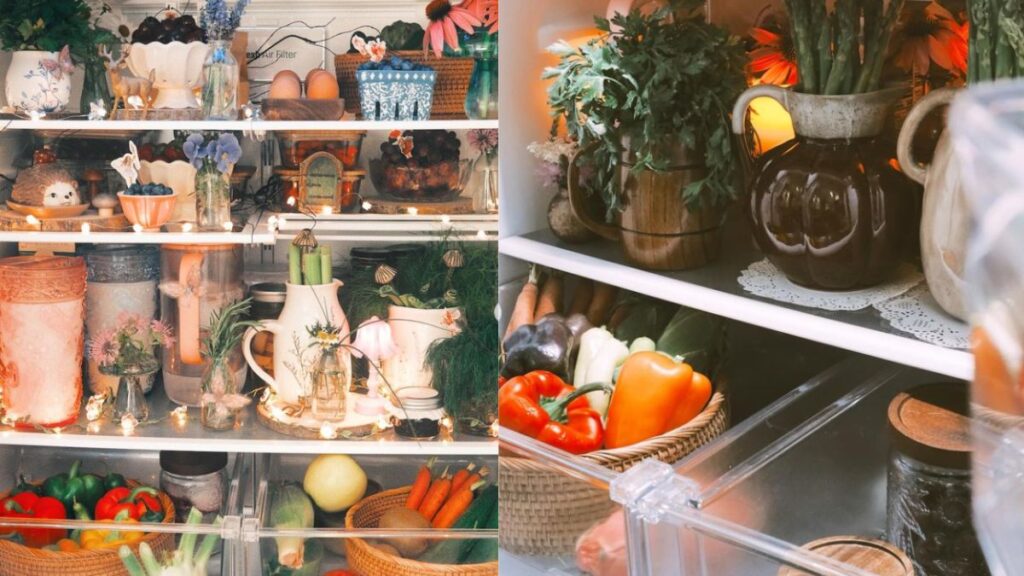fridgescaping: The Art of Organizing Your Fridge
In recent years, the concept of “fridgescaping” has gained popularity as people seek to bring order, efficiency, and even a touch of beauty to their kitchens. Fridgescaping, a portmanteau of “fridge” and “landscaping,” refers to the practice of organizing and arranging the contents of your refrigerator in a way that is not only functional but also aesthetically pleasing.

Why Fridgescaping Matters
Fridgescaping is more than just a trend; it’s a practical approach to improving your daily life. A well-organized fridge can save you time, reduce food waste, and make meal preparation easier. When everything is in its place, you can quickly find what you need, and you’re less likely to let items expire or go unnoticed.
Moreover, a neatly arranged fridge can inspire healthier eating habits. When fruits, vegetables, and other nutritious foods are clearly visible and easily accessible, you’re more likely to reach for them instead of less healthy options. Fridgescaping can also enhance the overall aesthetic of your kitchen, making it a more enjoyable space to spend time in.
Key Principles of Fridgescaping
- Declutter and Clean: The first step in fridgescaping is to remove everything from your fridge and give it a thorough cleaning. Dispose of expired items and anything you no longer need. This step creates a blank canvas for your fridgescaping efforts.
- Categorize and Group: Organize your fridge by grouping similar items together. For example, keep all dairy products in one section, fruits and vegetables in another, and condiments in a designated area. This not only makes it easier to find what you need but also helps prevent cross-contamination and keeps your fridge looking orderly.
- Use Clear Containers: Invest in clear, airtight containers to store loose items such as berries, chopped vegetables, and leftovers. Clear containers allow you to see what’s inside at a glance, reducing the likelihood of forgetting about items and letting them go to waste. Consider using stackable containers to maximize space.
- Label Everything: Labeling containers and shelves can further streamline your fridgescaping efforts. Labels can indicate the contents of a container, the date it was prepared, or even its intended use (e.g., “Lunch Ingredients” or “Smoothie Supplies”). This helps everyone in the household keep the fridge organized and ensures that nothing gets overlooked.
- Consider the Layout: Think about the best way to arrange items based on how often you use them. Keep frequently used items at eye level for easy access, while less commonly used items can be placed on higher or lower shelves. Store raw meats on the bottom shelf to prevent any drips from contaminating other foods.
- Incorporate Aesthetics: Fridgescaping isn’t just about functionality; it’s also about creating a visually pleasing arrangement. Play with colors by arranging fruits and vegetables in a rainbow pattern or use matching containers to create a cohesive look. The goal is to make opening your fridge a delightful experience.
Benefits of Fridgescaping
- Improved Efficiency: A well-organized fridge means you can quickly find what you need, saving time during meal preparation and grocery shopping.
- Reduced Food Waste: When items are clearly visible and easy to access, you’re less likely to forget about them, reducing the chances of food spoiling before you can use it.
- Healthier Eating Habits: A neatly arranged fridge makes healthy options more appealing and accessible, encouraging better food choices.
- Enhanced Aesthetic Appeal: A fridgescaped fridge can elevate the overall look of your kitchen, making it a more inviting and enjoyable space.
- Cost Savings: By reducing food waste and avoiding duplicate purchases, fridgescaping can lead to cost savings over time.
Getting Started with Fridgescaping
If you’re new to fridgescaping, start small. Begin by organizing one section of your fridge, such as the produce drawer or condiment shelf, and gradually work your way through the rest of the fridge. As you become more comfortable with the process, you can experiment with different layouts, containers, and labeling systems.
Remember, fridgescaping is not about achieving perfection; it’s about creating a system that works for you and your household. Whether you’re looking to streamline your meal prep, reduce food waste, or simply enjoy a more organized kitchen, fridgescaping is a practical and rewarding practice to adopt.
